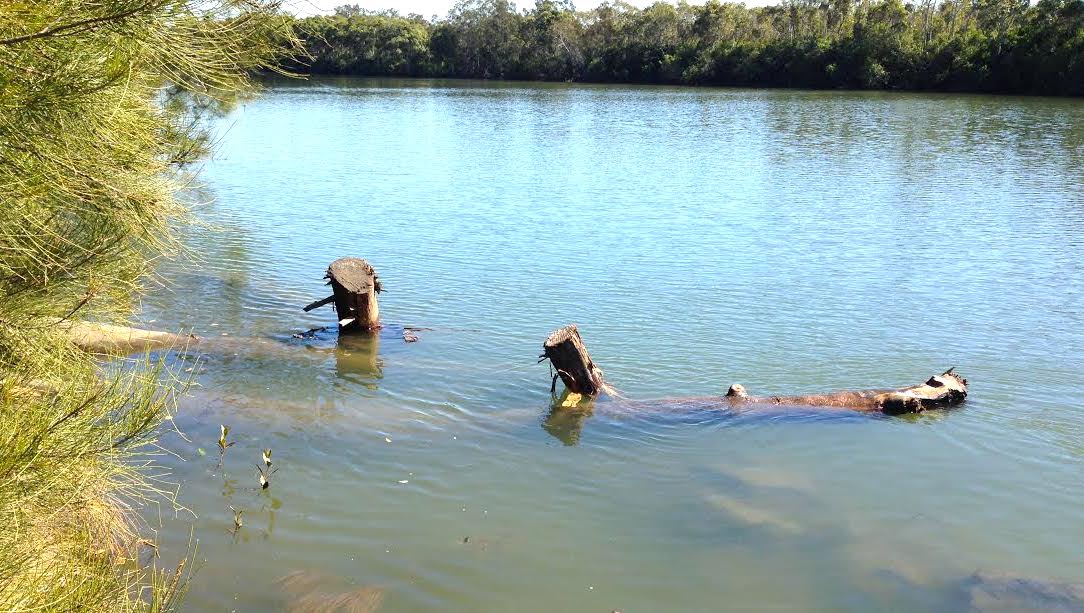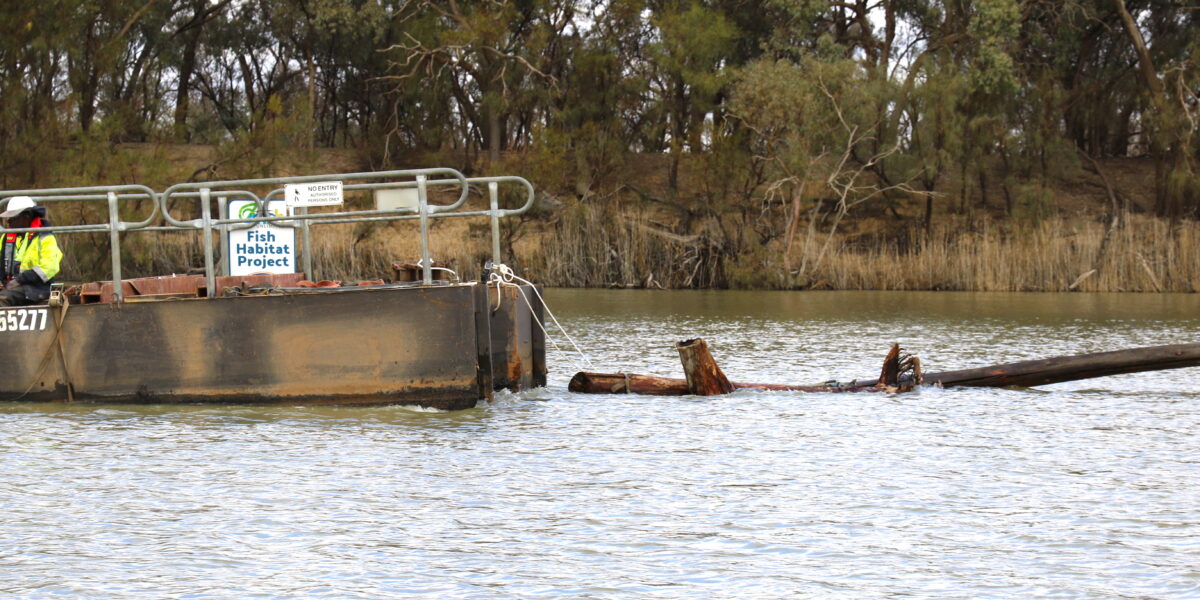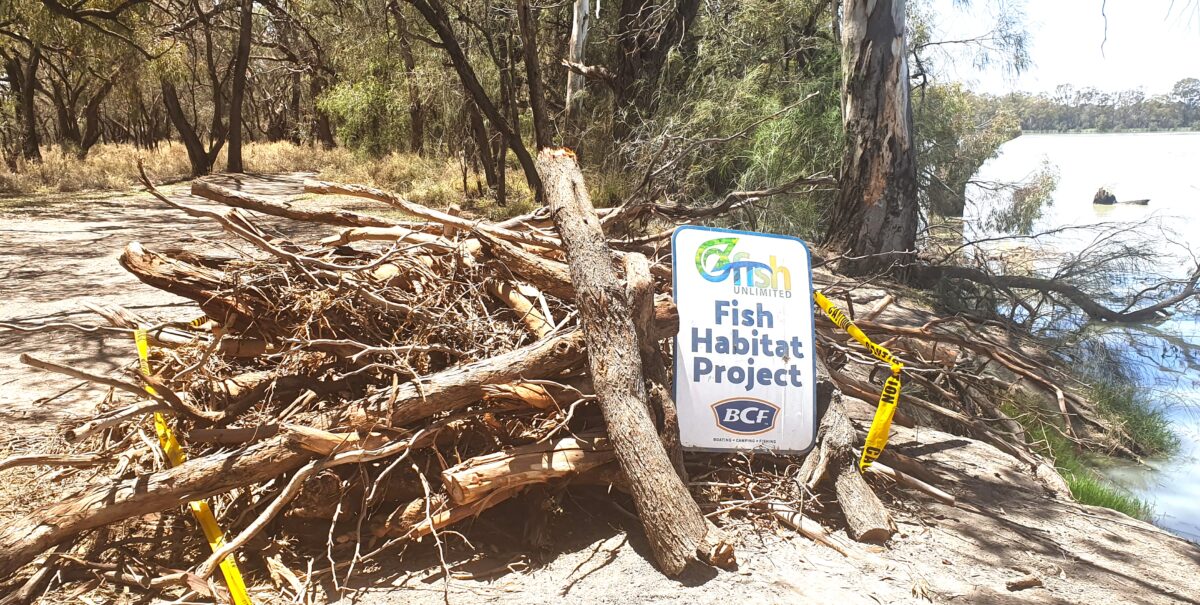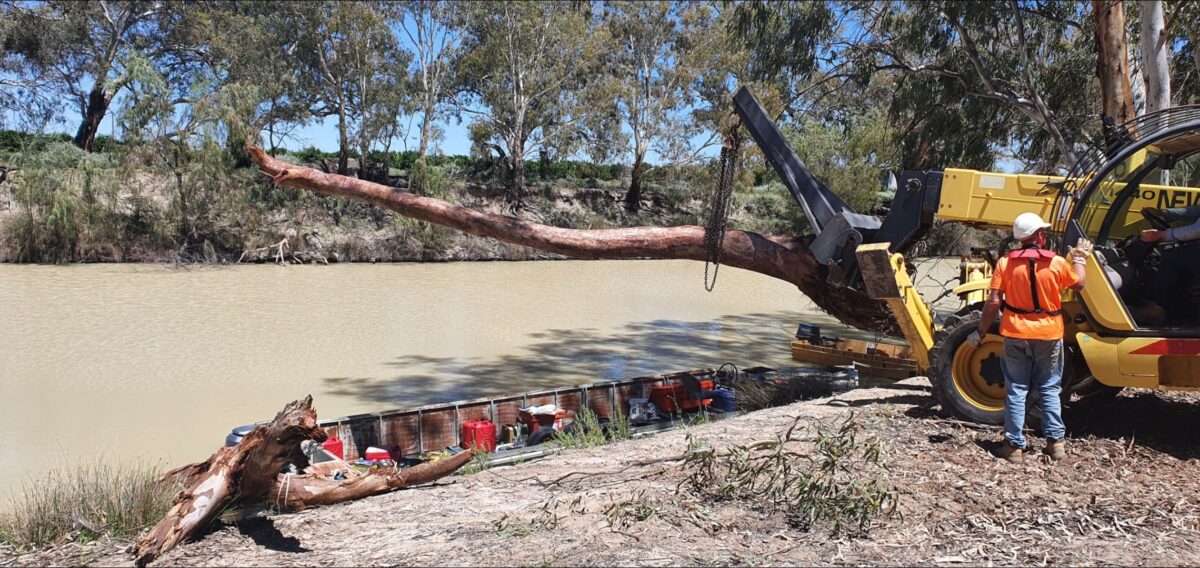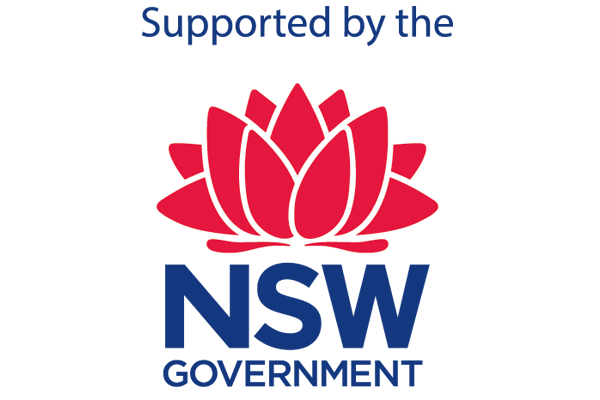Unpack Habitat – Snags and resnagging
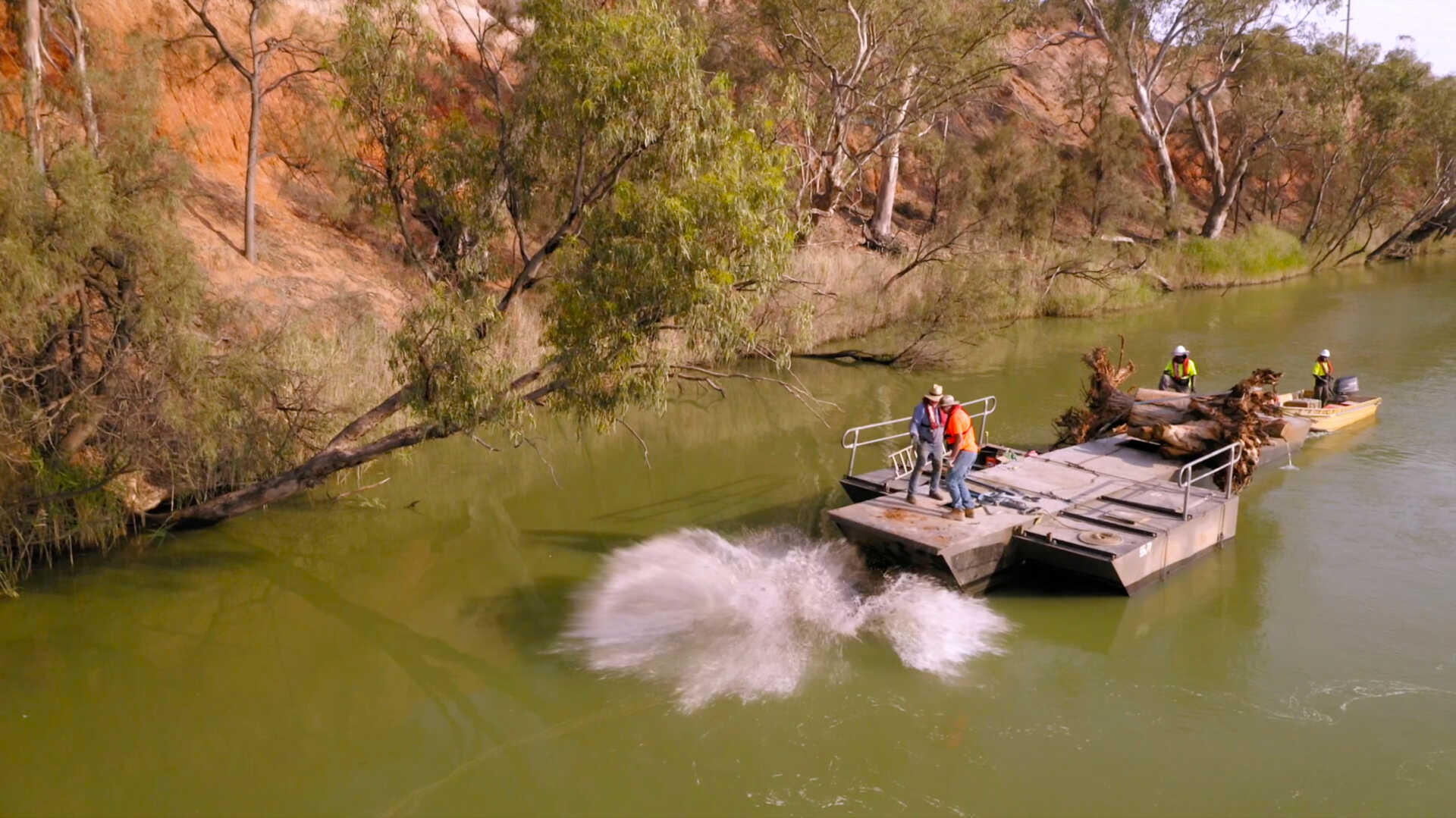
As part of the Growing River Stewardship program OzFish, supported by the NSW Government’s Environmental Trust, are unpacking habitat in an eight-part series in which we explore key fish habitat. This week we are looking into snags, particularly in the Murray-Darling Basin.
What are snags?
No, I’m not talking about the sausages you cooked on the barbie last weekend. I’m referring to trees, branches and other pieces of naturally occurring wooden debris found in our rivers and creeks. These types of structures can fall into waterways after flooding, bank erosion, wind or just as part of the tree’s life cycle. It’s a natural ecological process and something our fish rely on to create instream habitat.
Why are snags important?
Snags are important for all aquatic life in our river systems, especially for native fish. Snags provide critical breeding sites, shelter and protection from predators, a place to rest, ambush sites and feeding grounds for fish that like to eat algae and macro-invertebrates that accumulate on woody debris. Snags also play an important role in the physical shaping of Australian rivers, creating variability in depth and flow which our native fish rely on.
What are macro-invertebrates?
Macro-invertebrates are small animals that don’t have a backbone and are large enough to be seen without a microscope. Some common macro-invertebrates found in the Murray-Darling river are dragonfly larvae, mosquito larvae, water fleas, beetles and snails. They play a vital role in maintaining a healthy ecosystem and consume large amounts of algae and organic matter and remove nutrients from the water. Scientists sometimes use macro-invertebrates as a biological indicator to determine the health of the waterway or wetland. Macro-invertebrates can be found on snags, rocks, in the water column and on the surface of the water. Macro-invertebrates of all shapes and sizes end up as food for fish, however fish can be fussy in their choice of prey. What they prefer to eat depends on the species of fish. You may notice this if you like to fly-fish and have to use a specific artificial fly to target a specific fish.
What is de-snagging?
De-snagging is when a snag is deliberately removed from the ecosystem. Since the early 1800’s millions of snags have been removed from Australian waterways to improve safe river navigation and because there was once a misconception that snags caused erosion to river banks. Snags are still present in the Murray-Darling basin, but just in lower numbers. In some states of Australia, snags are now protected, and heavy fines apply if they are removed. The effects of de-snagging are long lasting, many populations of native fish which were widespread throughout the Murray Darling Basin are estimated to be at just 10% of pre-European settlement levels. Obviously, this decline isn’t only caused by the removal of snags but it is definitely a contributing factor. Less habitat means less fish and less fishing opportunities.
Further compounding the issue is the fact that much of our native riparian (bank edge) vegetation has been removed from river banks. In the past, riparian vegetation would have been a natural source of snags to replenish fish habitat in the river. By increasing the amount of native trees and shrubs around our waterways, we can help to ensure the long-term availability of snags for fish habitat.
Bring back the snags
A coalition of the willing including government agencies, scientists, OzFish Unlimited and other community groups have been working towards re-introducing snags in the Murray-Darling Basin and
other waterways across the country. A lot of careful consideration and research is undertaken to ensure that the snags are placed in a ‘natural’ but secure way. Though there have been impressive results so far, the native fish need more snags, for homes, for food, for shelter, and we will not restore our rivers and fisheries to their previous condition without more snags.
What is the ‘ideal’ snag habitat’?
Many native fish prefer to live in and around snags, and there is often a direct correlation between the number of fish and the amount of snags available within a waterway. Native fish prefer obscurely shaped snags with forks, branches, hollows and root masses which create a greater diversity of habitats. Snags are most effective when they are complex structures with various sized spaces and surfaces at different water levels (above and below the water surface) thus meeting the habitat requirements of different species. For example, Trout Cod have been found to prefer wood in higher flows in the middle of channels or downstream of bends, Murray Cod tend to be found around snags in slower-flowing waters near the edges, and Golden Perch prefer wood that extends higher into the water column.
Murray Cod are known to be highly territorial and often ‘claim’ a snag habitat as their ‘home’ for life. They can travel hundreds of kilometres during their breeding cycle to find the right mate, but they always return to their home-snag. The snag surface provides them with a perfect location for their nest, where the male Cod will guard the area around the snag fiercely. By increasing the numbers of snags in a river, we are directly increasing the number of Cod that can live and breed there.
Better Habitat, Better Fishing
You can get involved with OzFish Unlimited chapters that have been putting in snags into our waterways over the years and undertaking riparian plantings. Keep an eye out for any information sessions, conferences, tours or similar events that are focused on fish habitat and attend them. As we, as recreational anglers, need to increase our willingness to act on habitat issues to ensure there is a sustainable, healthier future for our beloved native fishery, therefore create more fish for us to catch!
Author – Demara Gates
Demara is currently studying at Southern Cross University completing her Marine Science and Land Management degree. She has been privileged to be accepted as an intern with OzFish. She enjoys fishing, snorkelling and getting out on her boat with family and friends around Northern Rivers in NSW.

